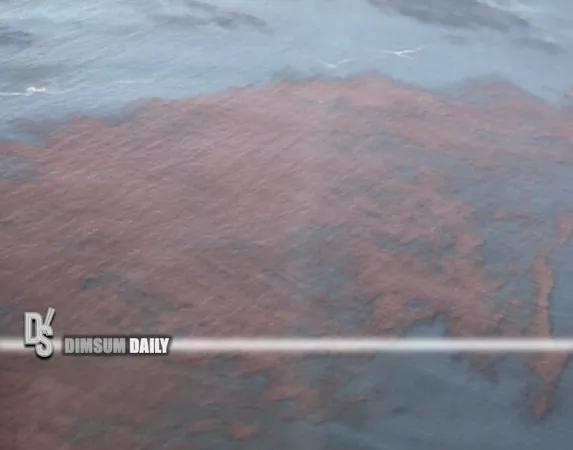
Shocking Wave of Red Tides Hits Hong Kong: Nine Detected in Just a Week!
2024-12-27
Author: Yan
27th December 2024 – Hong Kong
In a startling development, the Inter-departmental Red Tide Working Group has announced the detection of nine red tides in Hong Kong waters over the past week. This environmental phenomenon has sparked concerns among marine biologists and local fishermen alike.
Locations of Red Tides
The first sightings occurred on December 21 at popular spots such as Lido Beach, Casam Beach, and Ting Kau Beach in Tsuen Wan. Just two days later, on December 23, two additional red tides were reported by public and Marine Department staff in Deep Bay and Tai Lam Chung. The situation escalated on December 26, with two further occurrences at Ma Wan Tung Wan Beach and Kwun Yam Beach in Cheung Chau. The most recent red tides were identified on December 27 in the bustling Victoria Harbour and picturesque Discovery Bay.
Current Status
As of now, red tides are still prevalent in Deep Bay, Tai Lam Chung, Kwun Yam Beach, Victoria Harbour, and Discovery Bay, while the initial four locations have fortunately seen the tides dissipate. Alarmingly, officials have confirmed that despite the widespread occurrence, there have been no reported fish deaths linked to these red tides.
Causes of Red Tides
A spokesperson for the working group explained that the red tides at Kwun Yam Beach and Discovery Bay were caused by Noctiluca scintillans, a non-toxic species that typically thrives in the area. However, the other seven red tides were linked to Phaeocystis globosa, a species known to produce foam that can endanger local fish populations, raising alarms among eco-activists and industry leaders.
Response from Authorities
In response to these alarming events, the Agriculture, Fisheries and Conservation Department (AFCD) has advised mariculture operators in Ma Wan and Cheung Sha Wan fish culture zones to closely monitor water conditions and enhance aeration measures if necessary to protect marine life.
Conclusion
Red tides, characterized by their vibrant colors caused by algal blooms, are a natural occurrence, yet they can have striking consequences on local ecosystems and the fishing industry. The AFCD’s continued phytoplankton monitoring program aims to mitigate impacts on public health and minimize disruption to local fisheries. As the situation develops, local businesses and communities are urged to stay informed and prepare for potential effects on both the environment and their livelihoods. What does this mean for Hong Kong’s fishing industry and aquatic ecosystems? Only time will tell. Stay tuned for updates!



 Brasil (PT)
Brasil (PT)
 Canada (EN)
Canada (EN)
 Chile (ES)
Chile (ES)
 Česko (CS)
Česko (CS)
 대한민국 (KO)
대한민국 (KO)
 España (ES)
España (ES)
 France (FR)
France (FR)
 Hong Kong (EN)
Hong Kong (EN)
 Italia (IT)
Italia (IT)
 日本 (JA)
日本 (JA)
 Magyarország (HU)
Magyarország (HU)
 Norge (NO)
Norge (NO)
 Polska (PL)
Polska (PL)
 Schweiz (DE)
Schweiz (DE)
 Singapore (EN)
Singapore (EN)
 Sverige (SV)
Sverige (SV)
 Suomi (FI)
Suomi (FI)
 Türkiye (TR)
Türkiye (TR)
 الإمارات العربية المتحدة (AR)
الإمارات العربية المتحدة (AR)